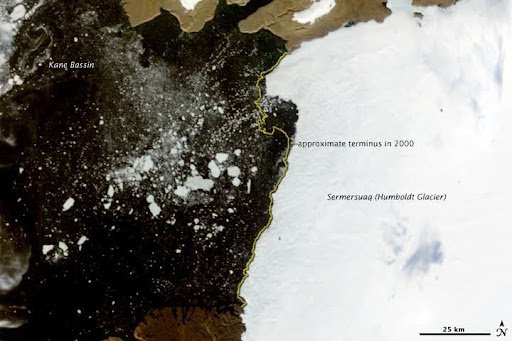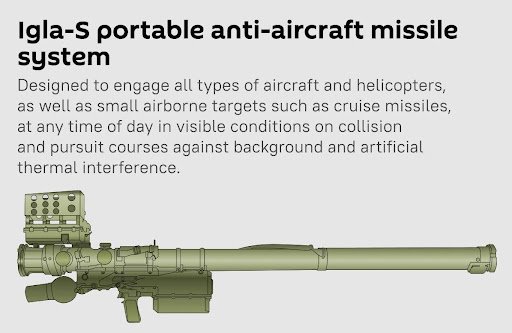GS Paper 1
Kanwar Lake
- News: Kanwar Lake, a Ramsar site, is slowly drying.
- Definition: Kanwar Lake, also known as Kabartal Jheel, is Asia’s largest freshwater oxbow lake located in Bihar.
- Formation
- Oxbow Lake: Kanwar Lake is a crescent-shaped oxbow lake, formed alongside a winding river as a result of erosion and sediment deposition over time.
- River Origin: It was formed due to the meandering of the Gandak River, a tributary of the Ganga.
- Ecological Significance: The wetland is an important stopover along the Central Asian Flyway, with 58 migratory waterbirds using it to rest and refuel.
- Threats: Major threats to the site include water management activities such as drainage, water abstraction, damming, and canalization.
Humboldt Glacier
- News: Latest studies have found that the Humboldt glacier has shrunk to an area of less than 2 hectares.
- Overview of Humboldt Glacier: Humboldt Glacier is also known as Sermersuaq Glacier.
- Location: It is one of the major glaciers in northern Greenland, bordering the Kane Basin in North West Greenland.
- Distinction: Humboldt Glacier holds the distinction of being the widest tidewater glacier in the Northern Hemisphere.

- Glacier Size Standards:
-
-
- The standard size for an area to be considered a glacier is approximately 10 hectares.
- The Humboldt Glacier in Venezuela has diminished to less than 2 hectares in size, prompting a downgrade in its classification from a glacier to an ice field.
-
- Current State of Humboldt Glacier in Venezuela:
-
-
- Venezuela once hosted 6 glaciers in the Sierra Nevada de Mérida; now it has none.
- The last Humboldt Glacier melted faster than expected and has been reclassified as an ice field due to its reduced size.
-
- Causes of Melting:
-
-
- Climate Impact: Accelerated melting is attributed to rising temperatures driven by climate change and the recent El Niño phenomenon, which exacerbates the warmth.
- Lack of Monitoring: Political turmoil in Venezuela has hindered consistent scientific monitoring of the glacier.
- Mitigation Efforts: The Venezuelan government attempted to slow the melting by installing a thermal blanket over the glacier, but experts consider this measure ineffective.
-
- Global Context and Future Outlook:
-
-
- ICCI Report: The International Cryosphere Climate Initiative (ICCI) noted that Venezuela is likely the first modern nation to lose all its glaciers. Other countries at risk of becoming glacier-free include Indonesia, Mexico, and Slovenia.
- Asian High-Mountain Region: This region has also seen significant glacier loss due to record high temperatures and dry conditions.
- Irreversible Melting: Experts warn that glacier melting may be irreversible, stressing the importance of protective measures to preserve remaining glaciers.
-
- International Cryosphere Climate Initiative (ICCI):
- Formation: Established in 2009 following the COP-15 summit in Copenhagen, ICCI is a pivotal network aimed at cryosphere preservation.
- Mission: The initiative involves a collaboration of senior policy experts and researchers who work closely with governments and various organizations.
- Goal: ICCI aims to develop and implement strategies that help preserve as much of Earth’s cryosphere as possible.
- Focus Areas: ICCI concentrates on the unique climate dynamics affecting three key cryosphere regions: the Arctic, the Antarctic, and high mountain areas.
- Role: The organization plays a critical role in adding urgency to global climate change efforts, particularly concerning CO2 and other greenhouse gases, emphasizing the swift and profound global implications of cryosphere warming.
Read also: Chabahar Port Agreement: Location, Significance and Challenges | UPSC
GS Paper 3
Igla-S
- News: The Indian Army will be receiving Russian Igla-S very short range air defence systems (VSHORAD) by the end of May 2024.
- Definition: The Igla-S is a man-portable air defence system (MANPADS) developed by Russia.
- Operation: It can be fired by an individual or a crew to bring down an enemy aircraft.
- System: The Igla-S system comprises the 9M342 missile, the 9P522 launching mechanism, the 9V866-2 mobile test station, and the 9F719-2 test set.
- These components work together to provide a comprehensive air defence solution.

- Capabilities
-
- Target Range: It can hit targets up to 6 km away and 3.5 km high.
- Target Identification: It can identify and neutralize air targets, such as cruise missiles and drones.
- Low-Flying Aircraft: It has the capability of bringing down low-flying aircraft.
TAK-003
- News: A new vaccine, TAK-003, for dengue received prequalification from the World Health Organization (WHO).
- Overview: TAK-003 is a live-attenuated vaccine containing weakened versions of the four serotypes of the virus that cause dengue.
- Dengue Disease
- Symptoms: High fever, severe headache, pain behind the eyes, muscle and joint pain, etc. Dengue may lead to death.
- Vector: Dengue is transmitted by infected female mosquitoes, primarily the Aedes aegypti. It can also be transmitted from a pregnant mother to her baby, via blood products, organ donation, and transfusions.
- Development: TAK-003 is developed by Japan’s pharmaceutical company Takeda.
- WHO Prequalification
-
- Second Dengue Vaccine: TAK-003 is the second dengue vaccine to receive WHO prequalification, following the CYD-TDV vaccine (also called Dengvaxia by French Pharma Sanofi Pasteur).
- Evaluation: WHO prequalification evaluates vaccines against stringent international standards to ensure they meet requirements for quality, safety, and effectiveness.
- Harmonization: By prequalifying vaccines, WHO helps to harmonize vaccine standards across different countries, providing a reliable list for UN agencies and national immunization programs to select vaccines for their populations.
Global Report on Internal Displacement 2024 (GRID-2024)
- News: The 2024 Global Report on Internal Displacement (GRID) report has been published.
- About the Report: The report is published annually by the Geneva-based Internal Displacement Monitoring Centre (IDMC) and documents internal displacements caused by conflict, violence, and disasters.
- Key Findings:
- Increase in Total Internally Displaced People: The number of internally displaced people increased to 75.9 million in 2023, up from 71.1 million in 2022.
- Conflict and Violence
-
-
- Significant Rise: Displacements due to conflict and violence rose significantly in 2023, with 68.3 million people displaced by the end of the year, marking a 49% increase from 2022.
- Main Affected Countries: The main countries affected included Sudan, Syria, the Democratic Republic of the Congo (DRC), Colombia, and Yemen, which collectively host nearly half of the world’s internally displaced population.
-
- Displacement Due to Natural Disasters
-
-
- Total Displacements: Displacements caused by disasters totaled 7.7 million by the end of 2023. Earthquakes accounted for a quarter of these displacements.
- Global Impact: Significant disaster-related displacements were recorded across 148 countries and territories, with Canada and New Zealand reporting their highest figures ever.
-
- Weather-Related Displacements
-
-
- Reduction in 2023: Although there was a one-third reduction in weather-related displacements in 2023 compared to 2022, they still constituted 56% of all displacements. 2023 was the third highest year for such displacements in the last decade.
- Cause of Decrease: This decrease is attributed to the shift from La Nina to El Nino, with La Nina typically associated with more storms and floods, while El Nino often brings drier conditions and droughts.
-
- Impact of Global Weather Phenomena on South Asia:
-
-
- Internal Displacements: South Asia, including India, reported its lowest internal displacements since 2018 with 3.7 million displacements, of which 3.6 million were due to disasters.
- El Nino Effect: This reduction is linked to the onset of El Nino, which resulted in below-average rainfall during the monsoon and a weaker cyclone season. However, floods and storms continued to cause significant displacements.
-
- Reversal of Displacement Trends: The increase in conflict and violence-related displacements in 2023 marks a reversal of the previous trend where natural disasters were the primary cause of displacement.
- Highlights from the 2022 Report: The 2022 report highlighted a 40% increase in disaster displacements from the previous year, predominantly due to weather-related events like floods and storms during the prolonged La Nina period.
